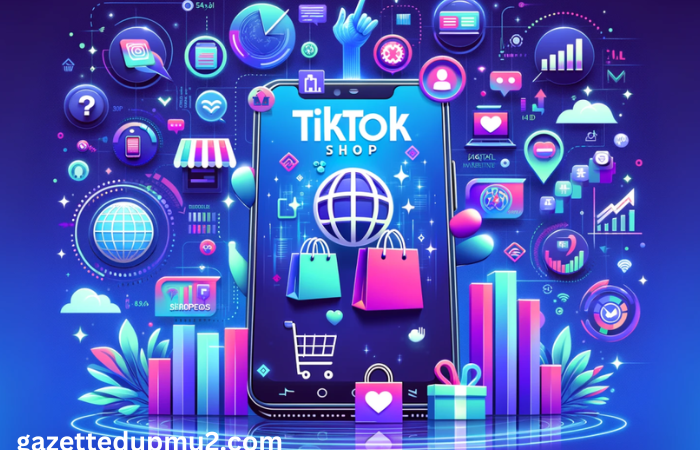Fashion and technology have often been viewed as distinct realms, but in the 21st century, they are merging into a dynamic and innovative partnership that is reshaping the industry in ways we could only have dreamed of a few decades ago. From smart fabrics to augmented reality shopping experiences, technology is revolutionizing the fashion landscape. In this article, we will explore how technology is influencing and shaping the future of fashion.
Introduction
The world of fashion has always been synonymous with creativity, style, and expression. However, in recent years, it has also become synonymous with another concept: technology. The marriage between fashion and technology has given birth to a new era of innovation, where clothing and accessories are no longer just static items but dynamic, interactive, and intelligent creations.
This fusion of chic and tech is not merely a passing trend; it’s a fundamental shift that is redefining the fashion industry. From smart textiles that can change color or temperature to virtual fashion shows and AI-powered personal stylists, technology is at the forefront of fashion’s evolution. In this article, we will delve into the various ways in which technology is shaping the future of fashion.
Smart Fabrics
Smart fabrics are perhaps one of the most remarkable developments in the fashion-tech realm. These fabrics are embedded with electronics and other advanced components, allowing them to respond to changes in the eAdd Newnvironment or user input. Here are some examples of smart fabrics:
Color-Changing Fabrics
Imagine a dress that changes color depending on your mood or the setting you’re in. With the use of thermochromic or photochromic pigments, such garments are now a reality. These pigments react to temperature or light, causing the fabric to shift colors. It’s not just about aesthetics; it’s also about self-expression and adaptability.
Temperature-Regulating Fabrics
Maintaining the ideal body temperature can be a challenge, especially in extreme weather conditions. However, thanks to advancements in textile technology, we now have fabrics that can regulate body temperature. These materials are designed to wick moisture away from the body when it’s hot and trap heat when it’s cold, ensuring optimal comfort.
Fitness and Health Monitoring Apparel
Wearable technology is not limited to smartwatches and fitness trackers. Today, you can wear clothing that monitors your health and fitness. These garments are equipped with sensors that can track your heart rate, body temperature, and even posture. They provide real-time data to help you make informed decisions about your health and well-being.
Interactive Garments
Interactive garments take fashion to a whole new level. These pieces of clothing are embedded with sensors and electronics that respond to touch, sound, or movement. For instance, there are dresses that light up when you dance or jackets that change patterns when you touch them. Interactive garments add an element of playfulness and engagement to fashion.
Sustainable Fashion
The fashion industry has long been criticized for its environmental impact. From water-intensive cotton farming to the pollution caused by textile dyeing, the production of clothing has taken a toll on the planet. However, technology is now playing a significant role in making fashion more sustainable.
3D Printing
3D printing has the potential to revolutionize the way clothing is manufactured. Instead of cutting and sewing fabric, 3D printers can create garments layer by layer, using materials that generate minimal waste. This technology not only reduces material waste but also allows for more intricate and customized designs.
Recycling and Upcycling
Fashion brands are increasingly turning to technology to recycle and upcycle materials. For instance, some companies use AI to sort and process textile waste, turning old clothing into new fabric. Others create accessories and clothing from discarded materials like plastic bottles or ocean debris. Technology is helping fashion become more circular and less wasteful.
Virtual Try-On
One of the main contributors to fashion waste is online shopping, where consumers often purchase items that don’t fit or look as expected. Virtual try-on technology is addressing this issue by allowing customers to see how a garment will look on them before making a purchase. By reducing the rate of returns, this technology helps cut down on the environmental impact of online shopping.
Augmented Reality (AR) in Fashion
Augmented reality is changing the way we shop for clothing and accessories. AR technology overlays digital elements onto the real world, creating immersive and interactive experiences. In the fashion industry, AR has several applications:
Virtual Fitting Rooms
Virtual fitting rooms allow customers to try on clothes virtually. By using a smartphone or AR glasses, shoppers can see how a garment looks on them without actually putting it on. This not only enhances the online shopping experience but also reduces the need for physical fitting rooms in brick-and-mortar stores.
AR Fashion Shows
The traditional fashion show is getting a digital makeover. Brands are using AR to create virtual fashion shows that can be experienced from the comfort of one’s home. These immersive experiences often include 3D models and animations that bring the clothing to life in ways that traditional runway shows cannot.
Personalized Styling
AR-powered apps can offer personalized styling recommendations based on a user’s preferences and body type. By analyzing your style history and measurements, these apps can suggest outfits and accessories that are tailored to your taste and fit.
Artificial Intelligence (AI) in Fashion
AI is another game-changer in the fashion industry, offering a wide range of applications that enhance the entire fashion lifecycle, from design to marketing:
Design Assistance
AI algorithms can analyze fashion trends, customer preferences, and historical sales data to help designers create collections that are more likely to succeed in the market. This not only streamlines the design process but also reduces the risk of producing unsold inventory.
Predictive Analytics
AI-powered predictive analytics can forecast demand for specific fashion items, enabling brands to optimize their inventory and supply chain management. This reduces overproduction and waste while ensuring that popular items are always in stock.
Personalized Shopping
AI-driven recommendation systems have become a staple in online retail. These systems analyze a customer’s browsing and purchase history to suggest products that match their style and preferences. This personalization not only enhances the shopping experience but also increases sales and customer loyalty.
Virtual Stylists
AI-powered virtual stylists can provide fashion advice and outfit suggestions based on a user’s input and style profile. These virtual stylists can help customers put together cohesive and fashionable looks without the need for an in-person stylist.
Sustainability and Ethical Practices
Consumers today are more conscious than ever about the ethical and environmental impact of their purchases. Technology is helping fashion brands become more transparent and accountable in these areas:
Blockchain for Transparency
Blockchain technology is being used to create transparent supply chains. By recording every step of a garment’s journey on a blockchain, consumers can trace the origins of their clothing, ensuring that it was produced in an ethical and sustainable manner.
Digital Twins
Digital twins are virtual replicas of physical products. In fashion, digital twins can be used to track and authenticate luxury goods, reducing the prevalence of counterfeit products in the market.
Sustainable Materials
Technology is enabling the development of innovative sustainable materials. For example, lab-grown leather and biodegradable textiles are emerging as eco-friendly alternatives to traditional materials like leather and cotton.




